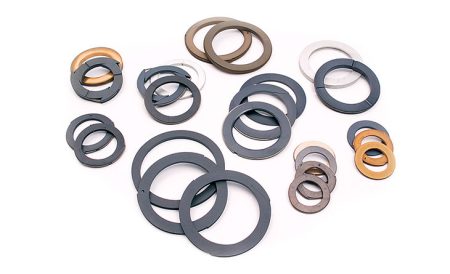Casters are often overlooked in industrial planning, yet they play a foundational role in mobility across warehouses, hospitals, factories, and construction sites. From design to final assembly, the caster production process combines materials science, engineering precision, and quality control. This article explores the full lifecycle of how a caster is made, focusing on caster mold technologies and the tradeoffs involved in material choices, cost efficiency, and production scalability.
Whether you’re an operations manager sourcing equipment or a procurement lead evaluating vendors, understanding this process helps in making informed decisions about long-term performance, durability, and ROI.
Step 1: Design and Engineering
The caster manufacturing process starts with defining application requirements:
- Load-bearing capacity
- Surface conditions (smooth, uneven, outdoor)
- Rotation and maneuverability needs
- Resistance to heat, chemicals, or moisture
Engineers use CAD (Computer-Aided Design) tools to model the caster assembly, accounting for wheel diameter, bracket strength, axle load, and swivel mechanics. For general-purpose use, 6 inch casters are often preferred for their balance of stability and maneuverability.
At this stage, materials are specified:
- Polyurethane or rubber wheels for shock absorption
- Thermoplastics for lightweight designs
- Carbon steel for industrial-strength frames
The design also incorporates locking mechanisms, brake configurations, or specialized treads if necessary.
Step 2: Caster Mold Fabrication
Once the design is finalized, the mold-making phase begins. A caster mold serves as the template for creating multiple parts with uniform dimensions and performance.
Molds are typically made of tool steel or hardened aluminum and are CNC-machined to tight tolerances. They must endure high temperatures and pressures during the molding process. For wheel components, there are different molding methods:
- Injection molding: Used for plastic or rubberized treads; provides fast cycle times
- Compression molding: Ideal for denser rubbers or thicker polyurethane
- Die casting: Applied to metal parts like hubs and brackets
This step requires a significant upfront investment but pays off over time through mass production efficiency.
Step 3: Material Processing and Wheel Fabrication
Each material used in caster production undergoes specific treatment:
- Steel wheel components are cut, forged, and heat-treated to improve hardness
- Plastic resins are dried and mixed with additives to enhance UV resistance or reduce friction
- Rubber is compounded, cured, and bonded to cores for seamless performance
For example, pneumatic wheels require additional assembly: an inner tube is inserted, inflated to a precise PSI, and mounted on a rim. Unlike solid wheels, they offer excellent cushioning for uneven terrain, making them ideal for carts used in outdoor or mixed-use environments.
Meanwhile, components for steel caster wheels are typically machined for precision and assembled with sealed bearings for long-term reliability in heavy-load environments.
Step 4: Frame and Mount Production
Caster frames are manufactured in parallel with wheels. These include the yoke, kingpin, fork, and top plate. Processes involved:
- Stamping and bending: Sheet steel is stamped into shape and bent into brackets
- Welding or riveting: For high-strength joints and alignment stability
- Surface treatment: Galvanization, powder-coating, or painting for rust resistance
For swivel casters, the base includes a raceway (a circular channel that holds ball bearings), allowing the caster to rotate smoothly under load. High-precision raceways are critical for reducing rolling resistance and maintaining stability during directional changes.
Step 5: Assembly and Integration
At this stage, all components converge:
- Wheels are mounted to forks using axles and bushings
- Bearings are inserted and greased
- Swivel mechanisms are tested for resistance and alignment
- Brakes or locks are added to designated models
Quality assurance teams inspect:
- Tread integrity and roundness
- Bearing functionality
- Load-bearing compliance
- Mounting plate dimensions
Automated assembly lines handle basic models, while complex or custom orders are assembled by hand to ensure accuracy.
Step 6: Quality Control and Stress Testing
The final caster assembly is subjected to rigorous tests, including:
- Load testing: Simulates maximum rated weight over extended periods
- Swivel testing: Measures resistance and ease of directional change
- Floor wear simulation: Replicates real-world contact with different surfaces
- Salt spray testing: Ensures corrosion resistance for outdoor or marine use
Casters that fail these tests are reworked or discarded to maintain brand integrity. These quality checks are especially crucial for sectors like aerospace, healthcare, and logistics, where mobility failure could lead to safety hazards or operational downtime.
Step 7: Packaging, Labeling, and Market Distribution
Casters are then cleaned, labeled with specifications, and packaged for shipment. Industrial-grade models are often sold in sets of four or bulk quantities to OEMs (Original Equipment Manufacturers) and distributors.
Labels typically include:
- Weight rating
- Wheel diameter
- Mounting type (top plate, stem, bolt hole)
- Material designation (steel, poly, rubber)
Marketing teams then segment products for:
- Retail (DIY hardware stores)
- Commercial B2B catalogs
- E-commerce platforms
Tradeoffs in Material Engineering and Cost Efficiency
Throughout the production process, manufacturers must balance performance, longevity, and price. For example:
- Rubber wheels are quieter and protect floors but wear faster
- Steel caster wheels last longer but can damage surfaces if misused
- Pneumatic wheels offer better shock absorption but require maintenance (air pressure checks, tube replacements)
Material engineers use finite element analysis (FEA) and real-world testing to refine wheel geometry, reduce stress concentrations, and lower production waste.
The caster mold design is often optimized for:
- Cycle time: Reducing mold-open-to-close time increases throughput
- Flow control: Minimizing bubbles and voids in plastic/rubber
- Cooling efficiency: Reduces time between mold cycles
Scaling Production While Maintaining Quality
As demand grows, manufacturers scale operations without compromising quality by:
- Investing in multi-cavity molds for high-output production
- Automating quality control using vision systems
- Maintaining spare tooling sets to reduce downtime
- Using statistical process control (SPC) to monitor performance trends
This is especially important for bulk orders of 6 inch casters, which are commonly used across retail, healthcare, and warehousing sectors.
Sustainability Considerations in Caster Production
With rising focus on environmental responsibility, some producers now:
- Use recyclable thermoplastics
- Recover rubber shavings from wheel trimming
- Treat wastewater from cleaning and coating operations
These sustainability efforts not only reduce carbon footprint but can improve brand positioning in eco-sensitive markets.
Innovations in Caster Manufacturing
Recent advances include:
- High-rebound polyurethane: Offers softer ride with longer tread life
- Precision raceways with dual bearing rows: Enhances swivel motion under load
- Magnetic brakes and locking systems: Improve control for sensitive equipment
- Modular caster platforms: Enable quick reconfiguration and customization
3D printing and rapid prototyping are also being used to test new wheel geometries before mold fabrication, reducing development time.
Common Challenges in Production
Despite automation and design tools, manufacturers still face:
- Mold warping due to improper cooling
- Surface defects in high-gloss finishes
- Inconsistent bonding in dual-material wheels
- Shrinkage or deformation during cooling
Continuous process improvement (CPI) strategies like Six Sigma and lean manufacturing help identify and resolve inefficiencies.
Final Thoughts: Why Manufacturing Quality Matters
From medical carts to heavy-duty dollies, the reliability of a caster impacts safety, productivity, and operational uptime. Poor-quality components lead to downtime, safety incidents, and higher replacement costs.
By understanding the stages of caster production—from mold design to quality control—procurement teams and engineers can make more informed choices about what to source and from whom. Whether you’re selecting rubber wheels for a lab or steel wheels for a foundry, insight into the production process ensures you get performance that matches your application.
When comparing options like swivel casters for agility or steel caster wheels for heavy loads, knowing the manufacturing standards behind the product can help you avoid premature failures and long-term regret.
So the next time you see a humble pneumatic wheel on a cart or roll a rack mounted with 6 inch casters, remember: there’s a full engineering and quality system behind that smooth, reliable movement.





